Difference between revisions of "Main Page"
(Updated Project description with more detail and links.) |
|||
| Line 44: | Line 44: | ||
| <h2 style="margin:0;background-color:#cef2e0;font-size:120%;font-weight:bold;border:1px solid #a3bfb1;text-align:left;color:#000;padding:0.2em 0.4em;">The Paparazzi Project</h2> | | <h2 style="margin:0;background-color:#cef2e0;font-size:120%;font-weight:bold;border:1px solid #a3bfb1;text-align:left;color:#000;padding:0.2em 0.4em;">The Paparazzi Project</h2> | ||
|- | |- | ||
|style="color:#000"|'''Paparazzi''' is | |style="color:#000"|'''[http://paparazziuav.org Paparazzi UAV]''' (Unmanned Aerial Vehicle) is an open-source drone hardware and software project encompassing autopilot systems for multicopters/multirotors, fixedwing, helicopters and hybrid aircraft. Paparazzi, being open, enables users to add more features and improve the system. Using and improving Paparazzi is encouraged by the community. | ||
The project includes | The project includes [https://github.com/paparazzi/paparazzi source-code] for the avionics and the ground station computers as well as the hardware designs for many parts of the avionics system. Paparazzi’s avionics software is designed with portability in mind. Allowing for the use of the Paparazzi UAV system on many varied hardware platforms. The ground station computer software is written in statically typed functional language assuring reliability and stability of the system. | ||
[ | Unlike other systems, [http://paparazziuav.org Paparazzi UAV] was designed with autonomous flight as the primary focus and manual flying as the secondary. From the beginning it was designed to be able to control multiple aircraft within the same system. Paparazzi features a dynamic flight plan system that is defined by mission states and using way points as “variables”. This makes it easy to create very complex fully automated missions without the operators intervention. | ||
Since its founding in 2003, Universities and civilian teams have employed Paparazzi to win top marks in high profile airborne robotics competitions around the world; thereby, proving the flexibility, durability and advanced features embedded in the Paparazzi framework. Many of these top marks and achievements have been documented on our [http://blog.paparazziuav.org blog]. | |||
Several core developers to the project are affiliated with universities and research institutions. These include, [http://www.enac.fr/en/home ENAC University] of Toulouse, France, [http://mavlab.lr.tudelft.nl/ MAVlab] of [http://www.tudelft.nl/en/ TU-Delft] in the Netherlands and [http://aggieair.usu.edu/ AggieAir] of Utah State University in the United States. | |||
Several vendors are currently producing and selling Paparazzi autopilots and popular accessories, making the system easy and affordable for everyone. Some of the companies were founded by core developers of the [http://paparazziuav.org Paparazzi UAV project] as a way to provided well tested and integrated hardware to the Paparazzi community. For example, [http://1bitsquared.com/ 1BitSquared] is developing [http://1bitsquared.com/collections/autopilots avionics hardware] and providing consulting services for system integration, software development as well as custom [http://1bitsquared.com/collections/hardware-kits/products/lisa-s-nano-quadcopter-kit nano UAV hardware] development. | |||
Paparazzi can be used for many applications from the emerging personal UAV market to advanced hobbyists, as well as University and civilian research programs and competitions. It is also being used in the field in daily operations, for example, [[SUMO]] is being used by [http://blog.pfump.org/?lang=en meteorological researchers] as reusable weather balloons for collecting data in the Antarctic. The multitude of applications for Paparazzi are endless, so join the community and contribute to the project with your innovative ideas. | |||
|- | |- | ||
Revision as of 02:36, 19 July 2015
Welcome To Paparazzi | |||||||||||||||||||
|
| ||||||||||||||||||





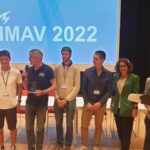 The International Conference and Competition on MAV was organized by TUDelft mid-September 2022. The ENAC took part to the outdoor competition, a package delivery challenge, with several multi-rotors and a hybrid tail-sitter, all powered by Paparazzi. They won the competition with a quite large amount of points. Nevertheless, all teams performed well with some innovative …
The International Conference and Competition on MAV was organized by TUDelft mid-September 2022. The ENAC took part to the outdoor competition, a package delivery challenge, with several multi-rotors and a hybrid tail-sitter, all powered by Paparazzi. They won the competition with a quite large amount of points. Nevertheless, all teams performed well with some innovative … 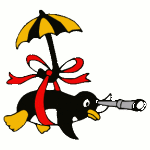 The latest Paparazzi stable release is out today with many changes and addition since 5.16 one year ago. One of the biggest changes is the complete rewrite of the build system for the aircraft code generation (good old Ocaml stuff), plus the addition of a proper dependency resolution for the modules. It has no big …
The latest Paparazzi stable release is out today with many changes and addition since 5.16 one year ago. One of the biggest changes is the complete rewrite of the build system for the aircraft code generation (good old Ocaml stuff), plus the addition of a proper dependency resolution for the modules. It has no big … 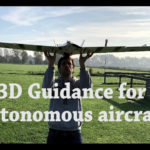 Now, you can have your aircraft tracking a (smooth) 3D parametric trajectory. This is an extension of the existing GVF in Paparazzi, in fact, now we allow even 2D trajectories with self-intersections. It is based on our accepted article in IEEE Transactions on Robotics Singularity-free Guiding Vector Field for Robot Navigation All the instructions to …
Now, you can have your aircraft tracking a (smooth) 3D parametric trajectory. This is an extension of the existing GVF in Paparazzi, in fact, now we allow even 2D trajectories with self-intersections. It is based on our accepted article in IEEE Transactions on Robotics Singularity-free Guiding Vector Field for Robot Navigation All the instructions to … 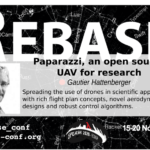 The Paparazzi UAV System as a research tool will be presented as an invited talk at the SPLASH2020-REBASE conference (Mon 16 Nov 2020 18:00, Paris time). See the program of the conference for details. The presentation will be available on live and free youtube. https://2020.splashcon.org/details/splash-2020-rebase/19/Paparazzi-an-open-source-UAV-for-research UPDATE: the video of the conference is online
The Paparazzi UAV System as a research tool will be presented as an invited talk at the SPLASH2020-REBASE conference (Mon 16 Nov 2020 18:00, Paris time). See the program of the conference for details. The presentation will be available on live and free youtube. https://2020.splashcon.org/details/splash-2020-rebase/19/Paparazzi-an-open-source-UAV-for-research UPDATE: the video of the conference is online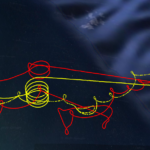 Enac UAV lab have participated to an atmospheric research flight campaign at the Barbados Island for three weeks from end of January 2020. This was part of a project called NEPHELAE in collaboration with the French National Meteorological Research Center from Météo-France and the robotics lab LAAS-CNRS. NEPHELAE is atmospheric science driven (with a focus …
Enac UAV lab have participated to an atmospheric research flight campaign at the Barbados Island for three weeks from end of January 2020. This was part of a project called NEPHELAE in collaboration with the French National Meteorological Research Center from Météo-France and the robotics lab LAAS-CNRS. NEPHELAE is atmospheric science driven (with a focus … 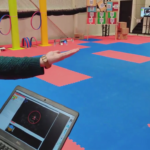 The popular Open-Source platform Crazylie v2.1 from Bitcraze is now supported by Paparazzi. Only the main frame, with IMU, barometer as well as the NRF communication is working. A bridge between the Crazyradio and the Ivy bus allows the direct and easy connection of the Crazyflie to the ground station. More sensor decks will be …
The popular Open-Source platform Crazylie v2.1 from Bitcraze is now supported by Paparazzi. Only the main frame, with IMU, barometer as well as the NRF communication is working. A bridge between the Crazyradio and the Ivy bus allows the direct and easy connection of the Crazyflie to the ground station. More sensor decks will be … 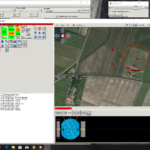 Since there are many Windows users who like to try paparazzi on this popular OS and Microsoft introduced the possibility of running Ubuntu programs and tools on windows 10, now Paparazzi developer team is pleased to announce the initial release of the Windows10 support of Paparazzi. The installation process is not so much different from …
Since there are many Windows users who like to try paparazzi on this popular OS and Microsoft introduced the possibility of running Ubuntu programs and tools on windows 10, now Paparazzi developer team is pleased to announce the initial release of the Windows10 support of Paparazzi. The installation process is not so much different from … 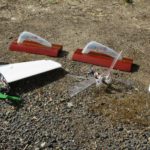 Enac UAV team and TUDelft MAVLAB team took part to the IMAV2018 conference and competition in Australia with great success! For the first time, the two academic lead developers of the Paparazzi UAV system join efforts to participate to the Outdoor competition and won this event far ahead. Several tasks have been completed, including a …
Enac UAV team and TUDelft MAVLAB team took part to the IMAV2018 conference and competition in Australia with great success! For the first time, the two academic lead developers of the Paparazzi UAV system join efforts to participate to the Outdoor competition and won this event far ahead. Several tasks have been completed, including a … 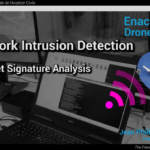 This is a first step of a hybrid IDS method based on the analysis of spectral traffic and a robust controller / observer for the estimation of anomalies in UAV networks. This module is currently designed to observe the traffic between the drones and the Paparazzi GCS. It provides a statistic signature of the traffic …
This is a first step of a hybrid IDS method based on the analysis of spectral traffic and a robust controller / observer for the estimation of anomalies in UAV networks. This module is currently designed to observe the traffic between the drones and the Paparazzi GCS. It provides a statistic signature of the traffic … 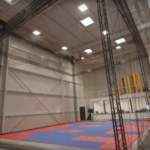 Since the beginning of the year, ENAC (French Civil Aviation University) is equipped with a new facility dedicated to UAVs research and education. The building includes a flying arena with a size around 10x10x10 meters, several workshops for mechanics, electronic, composite, 3D printing and storage. It also includes a teaching room for automatic control and …
Since the beginning of the year, ENAC (French Civil Aviation University) is equipped with a new facility dedicated to UAVs research and education. The building includes a flying arena with a size around 10x10x10 meters, several workshops for mechanics, electronic, composite, 3D printing and storage. It also includes a teaching room for automatic control and …